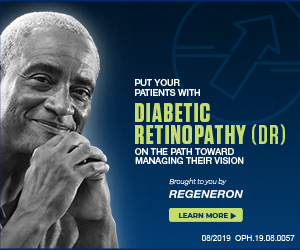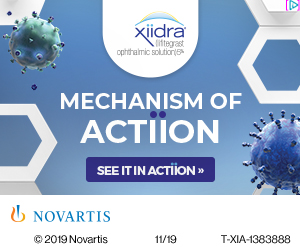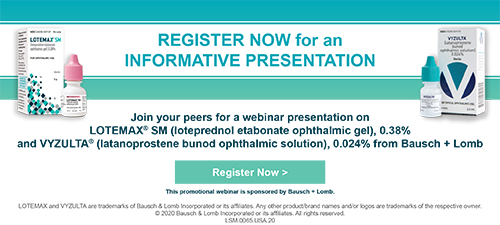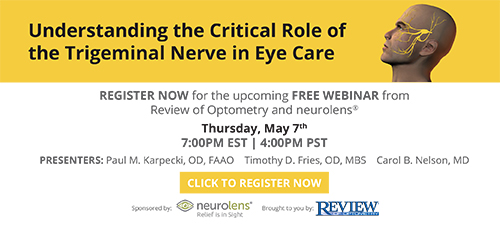
A
weekly e-journal by Art Epstein, OD, FAAO
Off the Cuff: The New Abnormal
These are indeed challenging times. Not that times haven’t been challenging before, but nothing like this. We are surrounded by an invisible enemy that is as deadly as it is unpredictable. Every day is bad news or hopeful news, or a mixture of both. We don’t know who to trust as the institutions we trusted have become more self-serving than honest. News media seems intent in politicizing or sensationalizing what is essentially human tragedy playing out before our eyes. In truth, many of us are isolated, cut off from our normal routines and, sometimes, even from the people who define our lives. We are uncertain, some of us for the very first time. Even the strongest willed among us fight off panic almost on a daily basis. It’s true, things will likely change, some of it of necessity, some of it because we made unwise decisions while trying to understand and deal with what’s happening to us. How much will change is as uncertain as everything else is. There is good here. We are reconnecting with old friends. We are seeing the error of our ways in ways we could not have seen before. I will have a lot more to say about that soon. There is also not-good here. We repeat things that don’t really mean very much like “the new normal” or “in the post-COVID era.” We don’t know all that much about COVID today to have any real idea of what will come after it. A quickly-discovered cure or an effective vaccine and mankind will likely do what mankind always does—go back to normal, a normal not that different from what was normal just a few weeks ago. Trapped in our houses, isolated from the things that were, virtually all of us want to just get back to normal. Not a new normal, but the normal we had. Maybe a normal that we will appreciate more. Maybe a normal that will take some time and effort to find, but this “new normal,” when it finally arrives will look a lot more like the old normal than what some are expecting or promoting. Thinking about the future, I’ll caution you not get carried away with telemedicine or online refraction. It may be helpful now and useful in the future, but it won’t pay enough to keep the lights on for long, and it may open doors we wished had been left closed.Note to Readers and Friends: Having caught the Zoom bug, thanks to virtual seminars I’ve been giving as well as missing the close connections I’ve enjoyed throughout my career, I am considering starting Optometric Physician Live using Zoom to host real-time interactive versions of Off the Cuff. I recognize it may be a lot of work and, depending on the moment, I think it’s either a great or a terrible idea. So I thought I would ask your opinion. Please share your thoughts—a simple “Yes, I‘ve been waiting all my life for this” or “No, I would rather binge-watch old Friends episodes.” Either way, I appreciate you taking the time. If I actually do this, the first episode will be titled: “Ask me anything. I’ll Tell You How I Plan to Turn Survival Into Success.” Optometric Physician - Live
|
|||||
 |
||
| Comparison of Structural and Functional Tests in Primary Open-angle Glaucoma | ||||
Eighty eyes of 40 patients with primary open-angle glaucoma (POAG), and 46 eyes of 23 healthy individuals were included to comparatively analyze the structural and functional tests used in the diagnosis and follow-up of glaucoma. Transient pattern electroretinography (PERG), steady-state PERG (ssPERG), computerized visual field (VF) screening, and examination of retinal nerve fiber layer (RNFL) and macular thickness on optical coherence tomography (OCT) were undertaken. The results were compared between the groups. Eighty eyes belonging to 40 patients with a diagnosis of POAG (23 female, 17 male) (18 mild, 22 moderate POAG) with a mean of 57.37 (±8.6) years, and 46 eyes of 23 healthy individuals (14 female, 9 male) with a mean age of 55.30 (±8.09) years were included in the study. PERG P50 and N95 and ssPERG latency revealed a significant delay in the POAG group. When the wave amplitudes were examined, they were found to be significantly lower in both PERG and sSPERG tests for the POAG group, but the results were more pronounced in ssPERG. The latency values of PERG and ssPERG tests were not significantly correlated with any of the parameters of the remaining tests. However, the amplitude values of these tests had a positive correlation with the mean deviation value and negative correlation with the pattern standard deviation value of VF. All associated parameters were significant for the amplitude value of the ssPERG test. |
||||
SOURCE: Karaca U, Dagli O, Ozge G, et al. Comparison of structural and functional tests in primary open angle glaucoma. Indian J Ophthalmol. 2020;68(5):805-11. |
||||
 |
||
| Perspectives and Impediments to Eye Care in Caregivers of Children with Childhood Glaucoma | ||||
This study included new and older children diagnosed with childhood glaucoma (which included congenital glaucoma and developmental glaucoma) at a tertiary hospital of east India to study the perceptions, attitude, knowledge of the disease and impediments to seeking early eye care in caregivers of children with childhood glaucoma. The caregivers were administered a video-based questionnaire through open-ended questions intended to collect demographic and other personal details, such as the caregiver's socioeconomic status, knowledge, attitude towards eye health and other social barriers. The responses were analyzed using thematic analysis technique into different buckets such as social status, knowledge/attitude and sociocultural beliefs while individual responses in each bucket were analyzed. Of a total of 43 patients included, >75% of patients came from places >200 km from the eye care center with >50% coming from >300 km. Most patients presented either <1 year (42%, n=18) or >3 years (52%, n=22) with only 2% (n=3) presenting between one and three years of age. The mother was the first person of contact to diagnose the eye abnormality in >45% of patients. Comparing differences among children who presented within one year of first diagnosis and those that presented later, caregivers hailing from long-distance >200 km from an eye care center, monthly income <5,000 INR, and those with social/cultural taboos (e.g., children's eyes should not be operated on) were more likely to seek delayed eye care for congenital glaucoma. Investigators suggested that impediments in seeking early eye care for blinding diseases in children (including distance from the nearest hospital, low socioeconomic constraints and sociocultural beliefs/taboos) mandate serious policies toward improving education about eye disease and eye health among caregivers. |
||||
SOURCE: Rao A, Raj N, Padhy D, Sarangi SP. Perspectives and impediment to eye care in caregivers of children with childhood glaucoma. Indian J Ophthalmol. 2020;68(5):798-804. |
||||
 |
||
| Indirect Choroidal Neovascularization Secondary to a Posterior-segment Intraocular Foreign Body - Case Report | ||||
Researchers reported a rare case of indirect choroidal neovascularization (CNV) secondary to a posterior-segment intraocular foreign body (IOFB) that was not located in the area of direct injury, but in the fovea. After intravitreal injections (IVIs) of aflibercept, the choroidal neovascularization (CNV) lesion disappeared and vision improved. A 26-year-old male patient suffered from a fast-shot metallic IOFB in his right eye. He underwent primary corneal repair, pars plana vitrectomy, IOFB removal and an IVI of antibiotics in the right eye. Two weeks later, cataract surgery was performed on the right eye for traumatic cataract after an episode of acute phacolytic glaucoma. The best-corrected visual acuity (BCVA) of the right eye improved to 20/20 five months after the first surgery. However, the vision of the right eye worsened suddenly with metamorphopsia one year after the first surgery. Color fundus images showed a whitish lesion with faint retinal hemorrhage and surrounding sensory elevation. Fluorescein angiography (FA) revealed a lesion with early- and late-phase severe leakage. Optical coherence tomography (OCT) demonstrated a CNV lesion with surrounding subretinal fluid. The patient received an IVI of aflibercept every eight weeks, at three different visits. Finally, the BCVA of the right eye improved to 20/25. Researchers advised that, for rare cases of fovea-spared injury by a metallic IOFB, it is necessary to pay close attention to the foveal microstructure to avoid possible CNV formation. They added that treatment with IVIs of anti-VEGF, aflibercept, as early as possible could provide good visual outcomes. |
||||
SOURCE: Lin YH, Peng KL. Indirect choroidal neovascularization secondary to a posterior-segment intraocular foreign body - case report. BMC Ophthalmol. 2020;20(1):161. |
||||
 |
||
| News & Notes | ||||||||
| J&J Vision Appoints Dr. Rajpal as CMO & Global Head of Clinical and Medical Affairs Johnson & Johnson Vision appointed Rajesh K. Rajpal, MD, as chief medical officer and global head of clinical and medical affairs. Dr. Rajpal is a corneal specialist specializing in cataract surgery, cornea/external diseases, anterior segment surgery, LASIK, and refractive surgery for more than 25 years. He has a special interest in the diagnosis and treatment of ocular surface conditions such as dry eye syndrome. Dr. Rajpal joins from Avedro, where he served as chief medical officer. Read more. |
||||||||
|
||||||||
| Foundation Fighting Blindness to Co-host Online CME Webinar The Foundation Fighting Blindness announced it will host its first ever continuing medical education event for 1 CME/COPE credit. The distance-learning course to be hosted on May 18, at 12 p.m. Eastern time will cover inherited retinal diseases, Foundation resources and current clinical trials. The course is designated for ophthalmologists and optometrists and will be offered free of charge. Learn more. |
||||||||
| Haag-Streit Group to Acquire Majority Shares in VRmagic Holding Möller Wedel Beteiligungen, part of the medical devices business unit (Haag-Streit Group) that belongs to the Metall Zug Group, signed an agreement to acquire about 77 percent of the shares in VRmagic Holding AG, based in Mannheim, Germany. VRmagic was established in 2001 and is a developer of virtual and augmented reality technology in medical training. The solutions permit a simulation of exams of and operations on the eye. By acquiring a majority stake in VRmagic, the Haag-Streit Group is rounding out its eye care offerings in the field of training. |
||||||||
| Maculogix Hosting Webinar Series on Marketing for ECPs Maculogix will host a three-part series on three consecutive Mondays, starting April 27, to help ECPs and their staff members gain tools to better market and grow their practices once they re-open. Topics are: • Create a marketing plan to jump-start your practice post-pandemic • Getting your digital ducks in a row • Getting social during the pandemic and beyond. Learn more. |
||||||||
|
Optometric Physician™ (OP) newsletter is owned and published by Dr. Arthur Epstein. It is distributed by the Review Group, a Division of Jobson Medical Information LLC (JMI), 19 Campus Boulevard, Newtown Square, PA 19073. HOW TO ADVERTISE |


